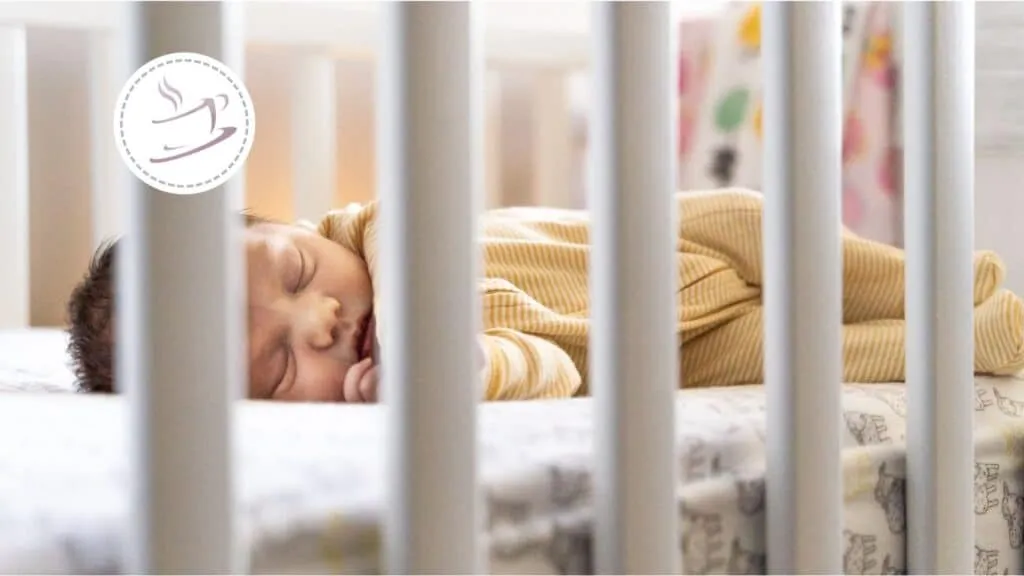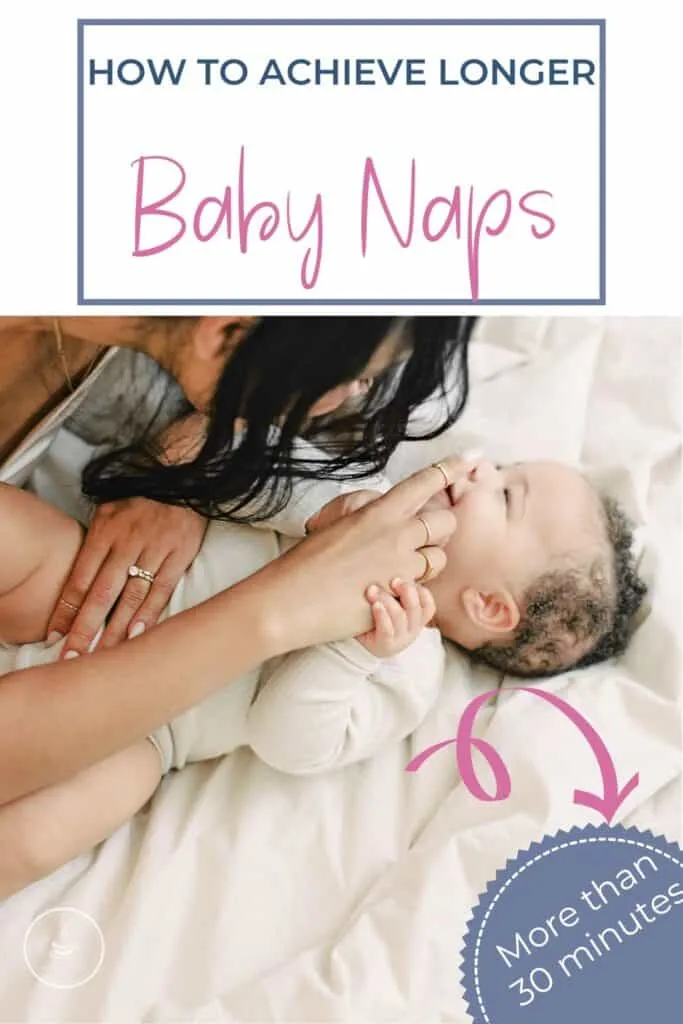If there are two sleep-related things that pretty much all new parents of younger babies long for, it's longer naps and better nighttime sleep. As you will find out, those two are actually related, but more on that later. So why is it so difficult for a baby to take a long nap, even though they are clearly tired? No matter how tired, and how much awake time they have already had, it often seems that the 30-minute nap is the best parents can hope for. And the result is that both babies and parents have a really hard time finding a suitable nap schedule.
The importance of baby sleep
The importance of baby sleep cannot be overstated, as it plays a crucial role in their overall development. Sleep is essential for the growth and repair of the body's tissues and organs, and it's during sleep that the brain processes and consolidates new information. For babies, sleep is especially important as it supports the rapid development of their brain and nervous system. During sleep, the brain makes connections between neurons, which help with learning and memory. It's also during sleep that hormones are released, which are essential for growth and development.

Nap time is a critical component of a baby's sleep routine, and shorter naps and longer awake windows may prevent them from getting enough sleep. It's essential for parents to create a consistent sleep routine and make sure their baby gets enough sleep throughout the day and night. Short naps can lead to a sleep-deprived baby, which can cause irritability, fussiness, and difficulty focusing. On the other hand, a well-rested baby is more likely to be happy, alert, and able to learn and explore their environment.
Overall, the quality and quantity of sleep that a baby gets is essential for their physical and cognitive development. As a result, it's crucial for parents to prioritize healthy sleep habits and establish a consistent sleep routine to ensure that their baby is getting the restorative sleep that they need to thrive.
Just being tired isn't enough
It's crucial to understand the role of circadian rhythms in promoting healthy sleep habits in babies. All human beings have an internal body clock that regulates the sleep-wake cycle, known as the circadian rhythm. The circadian rhythm determines phases of heightened and lowered brain activity. When a baby is put down for a nap during a period of heightened brain activity, it will be difficult for them to fall asleep and stay asleep for an extended period. Even if a baby dozes off while being rocked to sleep, the heightened brain activity may cause them to wake up as soon as the soothing action stops. This is one of the primary reasons for short 20-minute naps.

The circadian cycle repeats about every 90 minutes, with periods of light and deep sleep. Very young babies usually won't be able to sleep longer than those 90 minutes before they wake up, especially during the day when there is external stimulation available. As babies grow older, waking up is replaced by periods of lighter sleep, allowing them to sleep for longer periods.
It's important for parents to observe their baby's sleep cues and put them down for a good nap during a period of lowered brain activity to promote healthy and restful sleep. By creating a consistent sleep routine and a sleep-conducive environment, parents can help regulate their baby's circadian rhythm and promote healthy sleep habits that will benefit them in the long run.
The ideal window for a nap
The ideal sleep window is an essential part of a baby's circadian rhythm, and missing it repeatedly can lead to a severely sleep-deprived baby. It's essential to recognize that a baby's sleep window varies based on their age and developmental stage. As mentioned earlier, young babies usually won't be able to sleep longer than 90 minutes before waking up, especially during the day when there is external stimulation available. As they grow, the sleep cycle changes, and they will eventually transition into lighter sleep phases rather than waking up completely.
Recognizing the signs of sleepiness is critical for parents to help their baby get the rest they need. Some common signs of sleepiness in babies include rubbing their eyes, yawning, fussiness, and becoming less interested in their surroundings. It's important to recognize these cues and create a consistent sleep routine to help your baby get the rest they need.
What to do if your baby just won't sleep
If your baby is consistently having trouble napping, it's essential to take a step back and evaluate their sleep schedule. Make sure they are getting enough sleep throughout the day and night and that their sleep environment is comfortable and conducive to rest. If you continue to have concerns about your baby's sleep patterns, it's always a good idea to consult with your pediatrician. In some cases, they may be able to provide additional guidance or suggest alternative sleep strategies to help your baby get the rest they need.
To help a baby nap better and longer, there are some strategies that parents can try. Firstly, creating a suitable sleeping environment is essential. This can be done by making the room as dark as possible to reduce external stimuli that could disrupt the baby's sleep. Also, using white noise machines or apps can help create a calming background noise that mimics the womb's sound and helps the baby relax. Secondly, establishing sleep associations can signal to the baby that it's time to sleep.
This can be done by establishing a consistent pre-nap routine, such as singing a lullaby or reading a story, that cues the baby to sleep. However, it's important to avoid creating associations that the baby may become dependent on, such as rocking or feeding them to sleep. Finally, avoiding an overtired baby is crucial since an overtired baby can become too stimulated to nap. It's essential to recognize when the baby is showing signs of tiredness, such as rubbing their eyes or becoming fussy, and promptly putting them down for a nap.
The ideal environment for a good nap
Creating the ideal nap environment is crucial for a baby to get a good nap. Following these steps can make all the difference. Firstly, make sure the baby's sleep environment is similar to their night time sleep environment. This includes the use of white noise, a dark room, and similar sleep associations.

Secondly, it's important to create an environment that promotes deep sleep rather than light sleep. This can be achieved by using blackout curtains or blinds to ensure that the room is as dark as possible. Finally, avoid having the baby nap in the living room where there is a lot of noise and activity. A quiet and peaceful environment is crucial for the baby to fall asleep and stay asleep. Remember, an overtired baby will have a harder time falling asleep, so creating the ideal nap environment is a good thing. With these strategies in place, good luck getting your little one to take a longer nap!
It gets better, I promise
If you are a parent struggling with your baby’s naps, take heart! As your baby grows and reaches a few months of age, you will notice some positive changes in their sleeping patterns. Older babies are able to stay awake for a longer time, which means they can build up more sleep pressure and take longer naps. By four to six months old, many babies will settle into more consistent nap schedules and take longer naps. As your baby’s sleep cycle matures, they will start to have longer periods of deep sleep, allowing for more restful naps.
While very young babies may only sleep in short 30-minute increments, by the time they reach four to six months of age, they may be able to take hour-long naps or even longer. Additionally, older babies will have more stable sleep needs and will be better able to regulate their sleep patterns. You can help your older baby get the most out of their naps by providing a consistent sleep environment, ensuring they have a full tummy, and establishing positive sleep associations. So if you are struggling with your baby’s naps, take comfort in the fact that things will get better with time, and good luck on your parenting journey!
What to expect after the first year
After the first 12 months, many babies will start to consolidate their nighttime sleep and wake less frequently during the night. While some babies may continue to have occasional night wakings, others may be able to sleep through the night for a long time. In general, a good bedtime routine and consistent sleep schedule can help babies develop healthy sleep habits and get much-needed sleep.
For some babies, an early bedtime may also be beneficial, as it can help them get the amount of nighttime sleep they need to feel rested and refreshed the next day. With continued attention to their sleep needs and habits, parents can help ensure their little ones get a good night's sleep for months and years to come.
Resources
You can find further information on baby sleep here:
National Sleep Foundation - https://www.sleepfoundation.org/babies
The Baby Sleep Site - https://www.babysleepsite.com/
What to Expect - https://www.whattoexpect.com/first-year/baby-sleep/
Baby Center - https://www.babycenter.com/baby-sleep-basics


